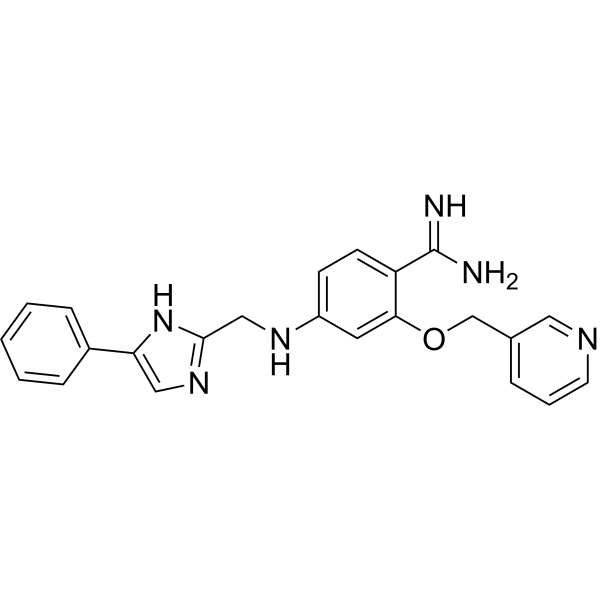Enzymes(酶)
Enzymes are very efficient and specific catalyst proteins which react with 1 or few types of substrates in biochemical reactions and are responsible for bringing about almost all of the chemical reactions in living organisms. Enzymes speed up reactions by providing an alternative reaction pathway of lower activation energy. Without enzymes, reactions take place at a rate far too slow for the pace of metabolism which means that they speed up the chemical reactions in living things.
There are 2 types of enzymes, ones that help join specific molecules together to form new molecules & others that help break specific molecules apart into separate molecules. Enzymes play many important roles ouside the cell as well. One of the best examples of this is the digestive system. For instance, it is enzymes in your digestive system that break food down in your digestive system break food down into small molecules that can be absorbed by the body. Some enzymes in your digestive system break down starch, some proteins and others break down fats. The enzymes used to digest our food are extra-cellular since they are located outside our cells & enzymes inside our cells are intra-cellular enzymes. Enzymes are used in ALL chemical reactions in living things; this includes respiration, photosynthesis, movement growth, getting rid of toxic chemicals in the liver and so on. Enzymes are proteins that must have the correct structure to be active. They are very easily affected by heat, pH and heavy metal ions.
Ribonucleoprotein enzyme catalytic activity is located in the protein part but for some the catalytic activity is in the RNA part. A catalyst is any substance which makes a chemical reaction go faster, without itself being changed. A catalyst can be used over and over again in a chemical reaction and does not get used up.
Enzymes lower the amount of activation energy needed by binding to the reactants of the reaction they catalyze, thus speed up the reaction and can process millions of molecules per second. Enzymes are typically large proteins with high molecular weight that permit reactions to go at conditions that the body can tolerate.
Enzyme nomenclature is based on what the enzyme reacts with & how it reacts along with the ending ase.
Enzymes must get over the activation energy hurdle.
Enzymes change how a reaction will proceed which reduces the activation energy and makes it faster. The more we increase the enzyme concentration the faster the reaction rate for non-catalyzed reactions. Enzymes that are catalyzed reactions also increase reaction rate at higher level of concentration but up to a certain point called Vmax which means that the enzyme has reached its maximum point. The reaction is limited by both the concentrations of the enzyme and substrate. Enzymes as catalysts take part in reactions which provide an alternative reaction pathway. Enzymes do not undergo permanent changes and remain unchanged at the end of the reaction. They only change the rate of reaction, not the position of the equilibrium.Enzymes as catalysts are highly selective by only catalysing specific reactions due to the shapes of the enzyme’s molecule.
Enzymes contain a globular protein part called apoenzyme and a non-protein part named cofactor or prosthetic group or metal-ion-activator. Changes in temperature and pH have great influence on the intra- and intermolecular bonds that hold the protein part in their secondary and tertiary structures.
Examples of cofactors are 1. Prosthetic group that are permanently bound to the enzyme. 2. Activator group which are cations (positively charged metal ions) & temporarily bind to the active site of the enzyme. 3.Coenzymes, usually vitamins or made from vitamins which are not permanently bound to the enzyme molecule, but combine with the enzyme-substrate complex temporarily. Enzymes require the presence cofactors before their catalytic activity can be exerted. This entire active complex is referred to as the holoenzyme.
Without enzymes, our guts would take weeks to digest our food, our muscles, nerves and bones would not work properly and so on…
Main Enzyme category groups:
Oxidoreductases:
All enzymes that catalyse oxido-reductions belong in this class. The substrate oxidized is regarded as a hydrogen or electron donor. The classification is based on 'donor:acceptor oxidoreductase'. The common name is 'dehydrogenase', wherever this is possible; as an alternative, 'acceptor reductase' can be used. 'Oxidase' is used only where O2 is an acceptor. Classification is difficult in some cases, because of the lack of specificity towards the acceptor.
Transferases:
Transferases are enzymes that transfer a group, for example, the methyl group or a glycosyl group, from one compound (generally regarded as donor) to another compound (generally regarded as acceptor). The classification is based on the scheme 'donor:acceptor grouptransferase'. The common names are normally formed as 'acceptor grouptransferase' or 'donor grouptransferase'. In many cases, the donor is a cofactor (coenzyme) that carries the group to be transferred. The aminotransferases constitute a special case.
Hydrolases:
These enzymes catalyse the hydrolysis of various bonds. Some of these enzymes pose problems because they have a very wide specificity, and it is not easy to decide if two preparations described by different authors are the same, or if they should be listed under different entries. While the systematic name always includes 'hydrolase', the common name is, in most cases, formed by the name of the substrate with the suffix -ase. It is understood that the name of the substrate with this suffix, and no other indicator, means a hydrolytic enzyme. It should be noted that peptidases have recommended names rather than common names.
Lyases:
Lyases are enzymes that cleave C-C, C-O, C-N and other bonds by means other than by hydrolysis or oxidation. They differ from other enzymes in that two (or more) substrates are involved in one reaction direction, but there is one compound fewer in the other direction. When acting on the single substrate, a molecule is eliminated and this generates either a new double bond or a new ring. The systematic name is formed according to 'substrate group-lyase'. In common names, expressions like decarboxylase, aldolase, etc. are used. 'Dehydratase' is used for those enzymes that eliminate water. In cases where the reverse reaction is the more important, or the only one to be demonstrated, 'synthase' may be used in the name.
Ligases:
Ligases are enzymes that catalyse the joining of two molecules with concomitant hydrolysis of the diphosphate bond in ATP or a similar triphosphate. 'Ligase' is often used for the common name, but, in a few cases, 'synthase' or 'carboxylase' is used. 'Synthetase' may be used in place of 'synthase' for enzymes in this class.
Products for Enzymes
- 41701(11)
- Activating Transcription Factor(3)
- Adenylate Kinase(10)
- AHCY(3)
- Aldolase(9)
- Asparaginase(5)
- Aurora Kinase(18)
- Beta Lactamase(3)
- Calcium and Integrin Binding(2)
- Calcium/Calmodulin-Dependent Protein Kinase(4)
- Carbonic Anhydrase(49)
- Casein Kinase(36)
- Cathepsin(52)
- Chitinase(5)
- Creatin Kinases(9)
- Cyclin(7)
- Cyclin-Dependent Kinase(18)
- Cyclophilin(23)
- Deaminase(14)
- Decarboxylase(12)
- Dehydrogenase(96)
- Discoidin Domain Receptor Tyrosine Kinase(2)
- DNA Polymerase(4)
- EGF Receptor(3)
- Endonuclease(6)
- Enolase(10)
- Enterokinase(5)
- Epimerase(3)
- Esterase(15)
- FGF Receptors(12)
- FK506 Binding Protein(10)
- Fructosamine 3 Kinase(2)
- Galactosidase(5)
- Glucosidase(32)
- Gluteradoxin(7)
- Glycogen synthase kinase(2)
- Glycosylase(10)
- Glyoxalase(3)
- Granzyme(7)
- Guanylate Kinase(2)
- Heparanase(2)
- Histone Deacetylase(3)
- Hydratase(10)
- Hydrolase(33)
- Hydroxylase(6)
- Isomerase(26)
- Jun N-terminal Kinase(1)
- Jun Proto-Oncogene(2)
- Kallikrein(26)
- Ligase(4)
- Lipase(14)
- Lipocalin(6)
- Lyase(9)
- LYVE1(3)
- Mitogen-Activated Protein Kinase(16)
- MMP(68)
- Mutase(11)
- Natural Enzymes(4)
- Nuclease(18)
- Nucleotidase(4)
- Nudix Type Motif(11)
- Other Enzymes(63)
- Oxidase(23)
- Oxygenase(12)
- Paraoxonase(3)
- Peptidase(41)
- Peroxiredoxin(10)
- Phosphatase(150)
- Phosphorylase(9)
- PI3-kinase(5)
- Polymerase(13)
- PPARG(2)
- Protease(15)
- Proteasome(54)
- Protein Kinase Akt1/PKB alpha(4)
- Protein Kinase-A(7)
- Protein Kinase-C(3)
- Protein Kinases(86)
- Protein Tyrosine Phosphatase(10)
- Reductase(60)
- Secreted Phospholipase A2(10)
- Serine Threonine Kinase(4)
- Sulfatase(8)
- Synthase(23)
- Synthetase(33)
- TGFBR(3)
- TGM2(3)
- TIMP(10)
- TPA(4)
- Transferase(156)
- Tyrosine Kinase(9)
- Ubiquitin Conjugating Enzyme(39)
- Uromodulin(4)
- VEGF Receptors(14)
- Transaminase(19)
- Hexokinase(6)
- TIE1(6)
- Cat.No. 产品名称 Information
-
GP21813
HSD17B11 Human
Hydroxysteroid (17-beta) Dehydrogenase 11 Human Recombinant

-
GP21814
HSD17B14 Human
Hydroxysteroid (17-beta) Dehydrogenase 14 Human Recombinant

-
GP21815
HTATIP2 Human
HIV-1 Tat Interactive Protein 2 Human Recombinant

-
GP21816
HTRA2 Human
HTRA2 Human Recombinant

-
GP22034
HYAL1
透明质酸酶

-
GP26170
HYAL1 Human
HYAL1 Human Recombinant produced in HEK cells is a single, glycosylated, polypeptide chain (22-435 a

-
GC43874
Hydroflumethiazide
氢氟噻嗪,Methforylthiazidine; Rontyl
A thiazide diuretic
-
GC47441
Hydroflumethiazide-13C-d2
Methforylthiazidine-13C,d2; Rontyl-13C,d2
An internal standard for the quantification of hydroflumethiazide
-
GP22531
HYKK Human
Hydroxylysine Kinase Human Recombinant

-
GC62345
IACS-13909
IACS-13909 is a specific and potent allosteric inhibitor of SHP2 (Src homology 2 domain-containing phosphatase) that suppresses signaling through the MAPK pathway.
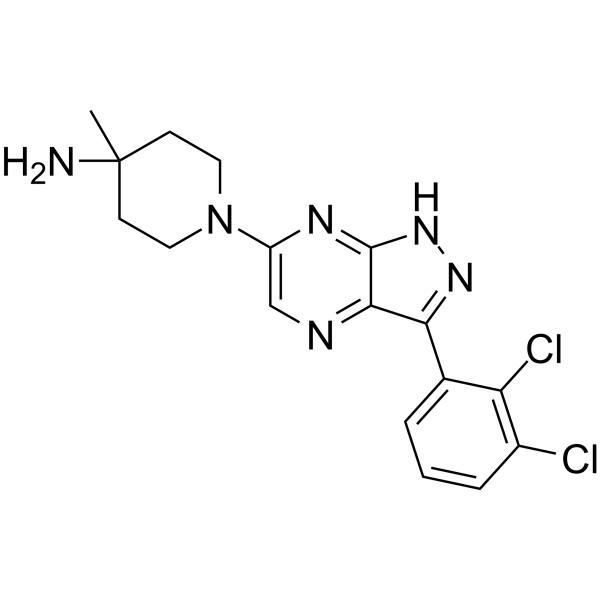
-
GC62677
Icerguastat
Sephin1; IFB-088
Sephin-1 (NSC-65390) is a selective inhibitor of a holophosphatase, a small molecule that safely and selectively inhibits a regulatory subunit of protein phosphatase 1 in vivo. Sephin-1 (NSC-65390) selectively bounds and inhibits the stress-induced PPP1R15A.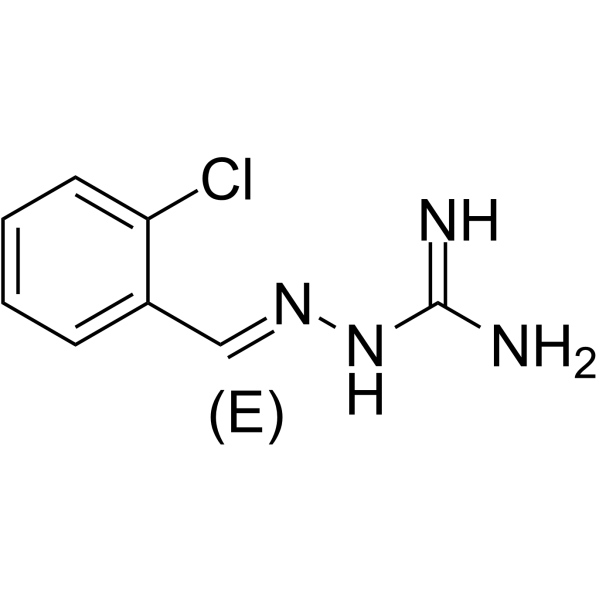
-
GP21817
IDE Human
Insulin-Degrading Enzyme Human Recombinant

-
GP21818
IDH1
异柠檬酸脱氢酶 1 酵母重组体

-
GP21819
IDH1 Human
Isocitrate Dehydrogenase-1 Human Recombinant

-
GP21820
IDH3G Human
Isocitrate Dehydrogenase 3 (NAD+) Gamma Human Recombinant

-
GP21822
IDI1 Human
Isopentenyl-Diphosphate Delta Isomerase 1 Human Recombinant

-
GP22532
IDNK E.Coli
Thermosensitive Gluconokinase E.Coli Recombinant

-
GP26191
IDNK E.Coli, Active
IDNK Recombinant produced in E

-
GP21823
IDO1 Human
Indoleamine 2,3-Dioxygenase 1 Human Recombinant

-
GP21824
IDO1 Human, Active
Indoleamine 2,3-Dioxygenase 1 Human Recombinant, Active

-
GP21825
IDS Human
Iduronate 2-Sulfatase Human Recombinant

-
GC70830
IHVR-17028
IHVR-17028是一种有效的广谱抗病毒药物。
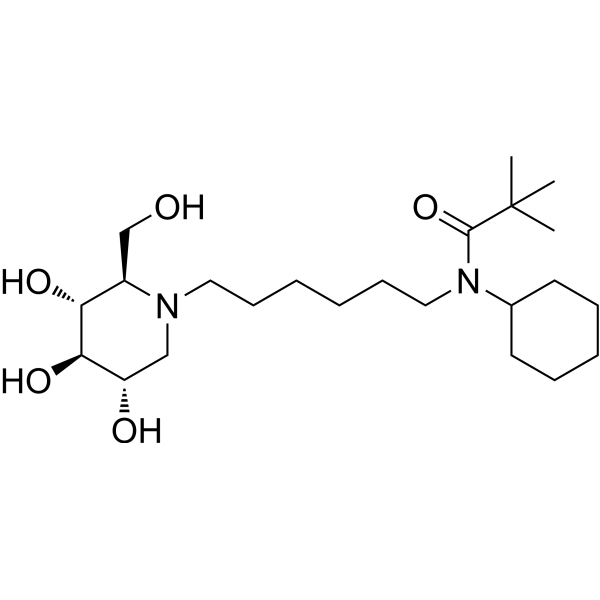
-
GP22533
ILK1 Human
Integrin Linked Kinase Human Recombinant

-
GP21826
IMMP2L Human
IMP2 Inner Mitochondrial Membrane Peptidase-Like Human Recombinant

-
GP21827
IMPA1 Human
Inositol Monophosphatase 1 Human Recombinant

-
GP21828
IMPA2 Human
Inositol Monophosphatase 2 Human Recombinant

-
GP21829
IMPDH1 Human
IMP Dehydrogenase 1 Human Recombinant

-
GP21830
IMPDH2 Human
IMP Dehydrogenase 2 Human Recombinant

-
GC72971
INCB3619
INCB3619ADAM10和ADAM17的IC50分别为22nM和14nM。
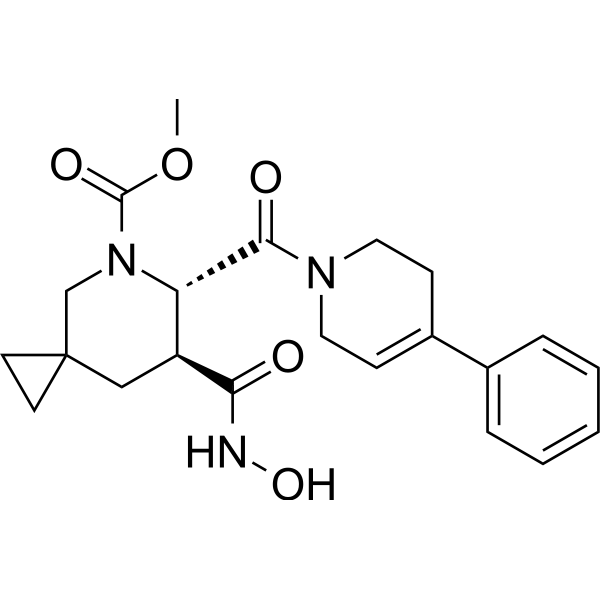
-
GC49195
Indapamide-13C-d3
An internal standard for the quantification of indapamide

-
GC65549
Indisulam
N-(3-氯-1H-吲哚-7-基)-1,4-苯二磺酰胺,E 7070
A sulfonamide with anticancer activity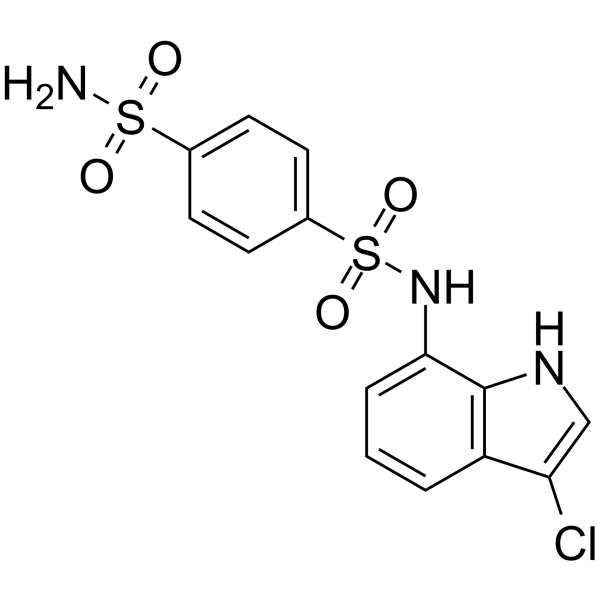
-
GP22534
IP6K2 Human
Inositol Hexakisphosphate Kinase 2 Human Recombinant

-
GC52175
IQA
5,6-二氢-5-氧代吲哚并[1,2-A]喹唑啉-7-乙酸
A CK2 inhibitor
-
GC25530
Iso-H7 dihydrochloride
Iso-H7 dihydrochloride is an inhibitor of phosphokinase C.
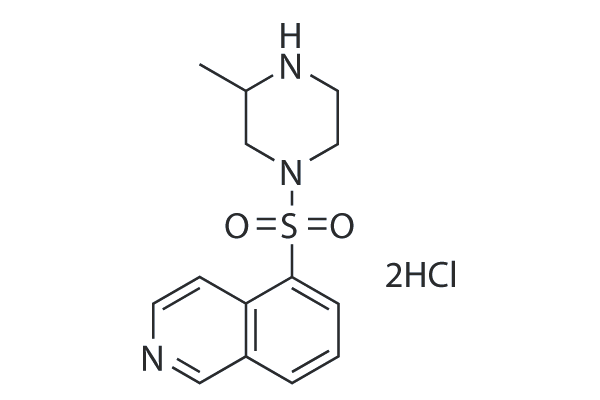
-
GC39134
Isofraxidin
异嗪皮啶
Isofraxidin (6,8-Dimethoxyumbelliferone), a bioactive coumarin compound isolated from the functional foods Siberian ginseng and Apium graveolens, is an anti-bacterial, anti-oxidant, and anti-inflammatory agent.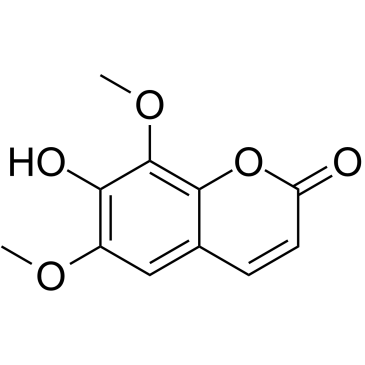
-
GC39095
Isoliquiritin apioside
芹糖异甘草苷
Isoliquiritin apioside (ISLA, ILA), a component isolated from Glycyrrhizae radix rhizome (GR), significantly decreases PMA-induced increases in matrix metalloproteinase (MMP) activities and suppresses PMA-induced activation of mitogen-activated protein kinase (MAPK) and NF-κB. Isoliquiritin apioside possesses anti-metastatic and anti-angiogenic abilities in malignant cancer cells and ECs, with no cytotoxicity.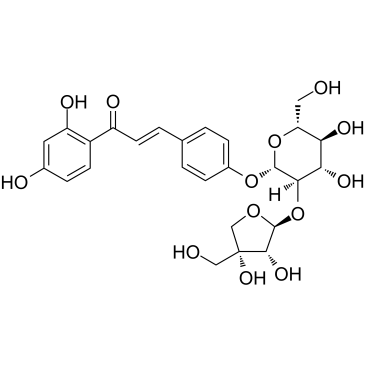
-
GP21831
ITPA Human
Inosine Triphosphatase Human Recombinant

-
GP22535
ITPK1 Human
Inositol-Tetrakisphosphate 1-Kinase Human Recombinant

-
GP21832
IVD Human
Isovaleryl Coenzyme A Dehydrogenase Human Recombinant

-
GP21833
IYD Human
Iodotyrosine Deiodinase Human Recombinant

-
GC73744
JAB-2485
JAB-2485是一种有效的选择性极光激酶a (AURKA)抑制剂,IC50为0.33 nM。
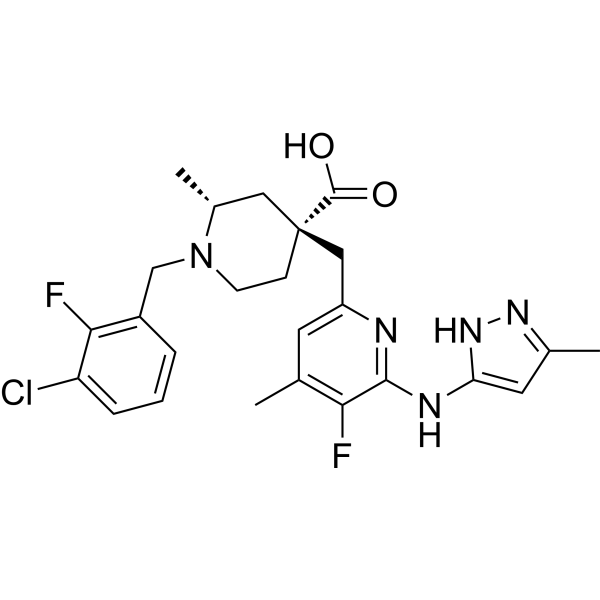
-
GP22536
JAK2 Human
Janus Kinase 2 Human Recombinant

-
GC69315
JMS-053
JMS-053 是一种有效,选择性和可逆的 PTP4A 抑制剂,抑制 PTP4A1,PTP4A2,PTP4A3,CDC25B 和 DUSP3 的 IC50 值分别为 29.1 nM,48.0 nM,34.7 nM,92.6 nM 和 207.6 nM。JMS-053 可以抑制癌细胞迁移和球状体生长,减弱体内卵巢肿瘤的生长。
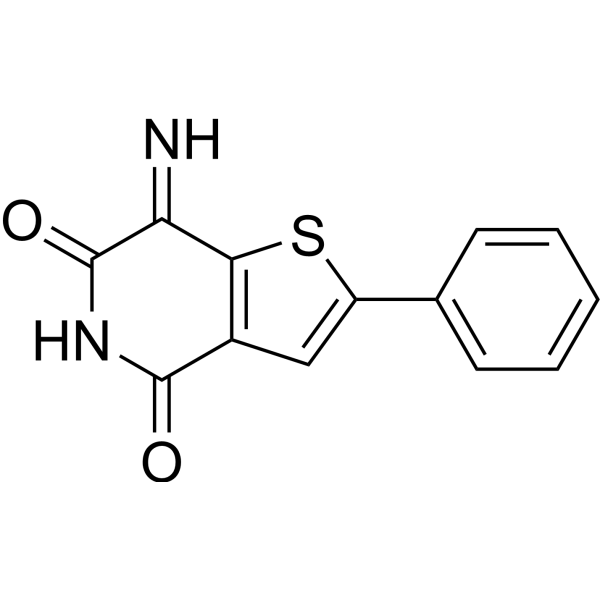
-
GP22537
JNK2/SAPK1 Human
JNK2/SAPK1 Human Recombinant

-
GC60960
JPM-OEt
JPM-OEt是一种广谱的半胱氨酸组织蛋白酶(cysteinecathepsin)抑制剂。JPM-OEt在活性位点共价结合,并且不可逆地抑制半胱氨酸组织蛋白酶家族。具有抗肿瘤活性。
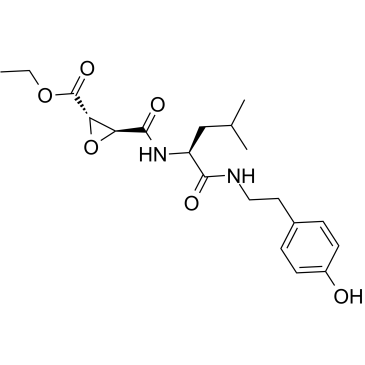
-
GC69323
JUN-1111
JUN-1111 是一种不可逆的选择性 Cdc25 磷酸酶 抑制剂,对 Cdc25A、Cdc25B、Cdc25C、VHR、PTP1B的 IC50 值分别为 0.38、1.8、0.66、28、37 µM。 JUN-1111 诱导细胞周期停滞在 G1 和 G2/M 期。JUN-1111 降低 phosphoCdk1 的表达。
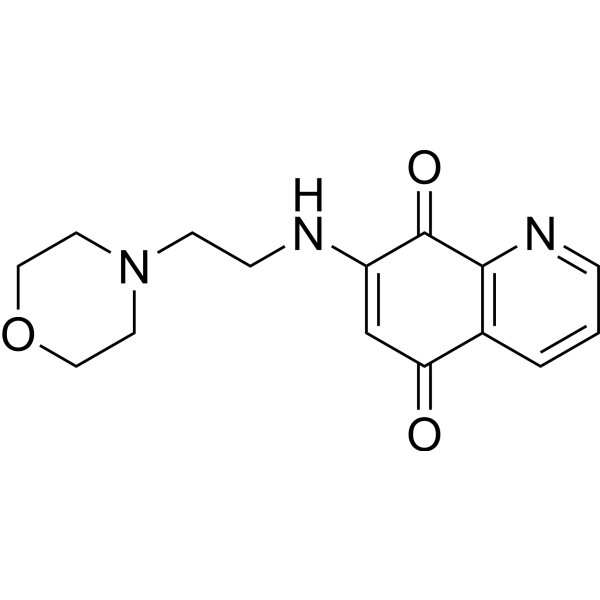
-
GC60212
K777
APC-3316, CRA-3316, K11777, MePip-Phe-hPhe-VSφ
A cysteine protease inhibitor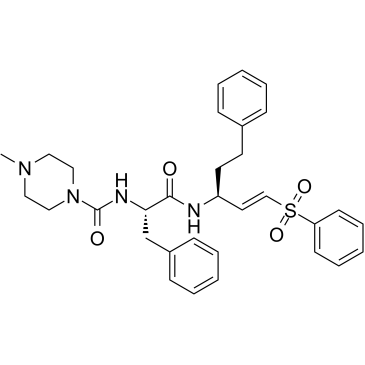
-
GC64519
Kaempferol-3,7-di-O-β-glucoside
山柰酚-3,7-双葡萄糖苷; Kaempferol 3,7-diglucoside
Kaempferol-3,7-di-O-β-glucoside (Kaempferol 3,7-diglucoside) 是一种黄酮醇,对 α-淀粉酶 (α-amylase)、α-葡萄糖苷酶 (α-glucosidase) 和乙酰胆碱酯酶 (Acetylcholinesterase) 具有酶抑制作用。Kaempferol-3,7-di-O-β-glucoside 保护分化神经元细胞 SH-SY5Y 免受 Amyloid β 肽诱导的损伤。Kaempferol-3,7-di-O-β-glucoside 具有用于研究阿尔茨海默氏症的潜力。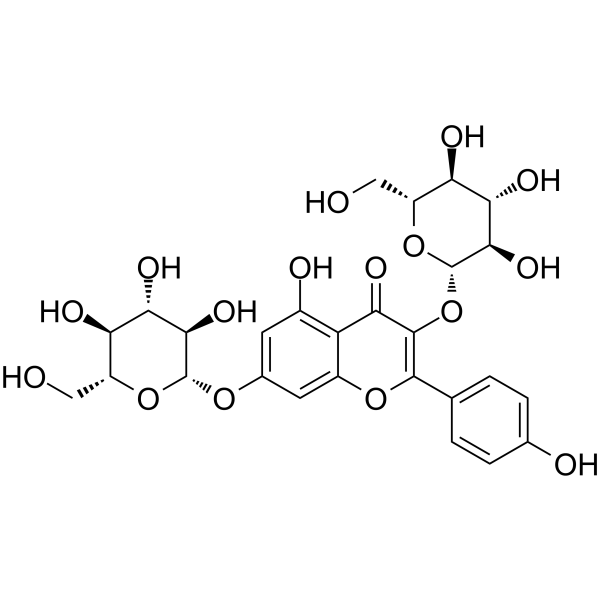
-
GC61635
Kaempferol-7-O-rhamnoside
山奈酚-7-O-鼠李糖苷
Kaempferol-7-O-rhamnoside是从ChimonanthusnitensOliv叶子中分离的,一种有效的α-葡萄糖苷酶活性抑制剂。Kaempferol-7-O-rhamnoside有用于糖尿病的潜力。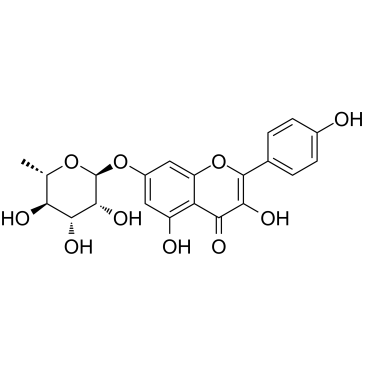
-
GC71069
Kallikrein 5-IN-2
Kallikrein 5-IN-2(化合物21)是一种选择性Kallikrein KLK5抑制剂(pIC50=7.1)。
